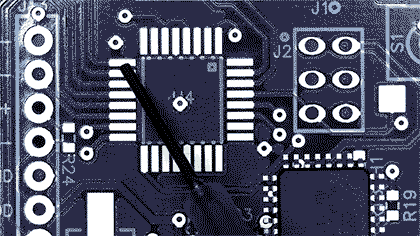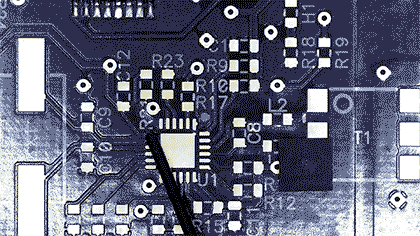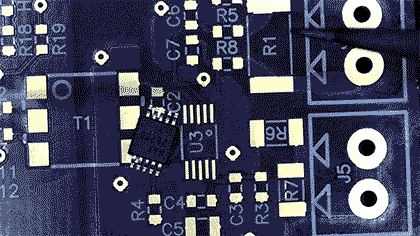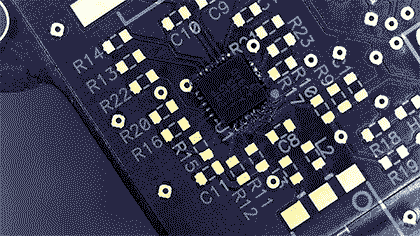I’ve created a YouTube video that shares some tips and techniques I’ve picked up for SMD soldering.
Watch the whole video:
If you want the condensed version, scroll down for brief explanations and animations!
Soldering a 32 pin microcontroller with solder paste and hot air:

Watch this section in real time!
When soldering a package that has many pins, it is advantageous to use solder paste and hot air, as many pins can be soldered at the same time. While this method may create bridging or leave some connections unsoldered, applying flux and dragging an iron slowly across all of the pins is usually enough to fix any issues. As always, clean up the left over flux with 99% isopropyl alcohol or naphtha.
Soldering a 24 pin TQFN package with solder paste and hot air:

Watch this section in real time!
When you have pads that are entirely covered by the part package, or even mostly covered, your only choice is to reflow with hot air or an oven. The approach is similar to the previous example, however, you should take extra care to ensure your connections are aren’t shorted given that you cannot visually inspect them. You can ohm out the pins with a multimeter before applying power to be sure that you won’t damage your part.
Soldering a 10 pin MSOP package with an iron:

Watch this section in real time!
For packages that don’t have a tremendous amount of pins, you may just want to use your iron and solder. In this demonstration I am soldering pin by pin. There are other techniques with an iron that involve pre-loading the tip with solder and steadily dragging across the pins. This method is fast and efficient, but requires special soldering iron tips such as this one: T15-CF4
Soldering 0603 resistors and capacitors:

Watch this section in real time!
Soldering SMD resistors, capacitors, and inductors can also be done with an iron or paste/hot air. When soldering with an iron, you want to apply solder to one pad and let it cool. Grab your part with tweezers and then liquefy the solder again with the iron as you use your other hand to slide the part over the pad. Once the solder cools again, remove the tweezers and your part should be held in place. You can now apply solder to the other side of the part to finish the connection.
